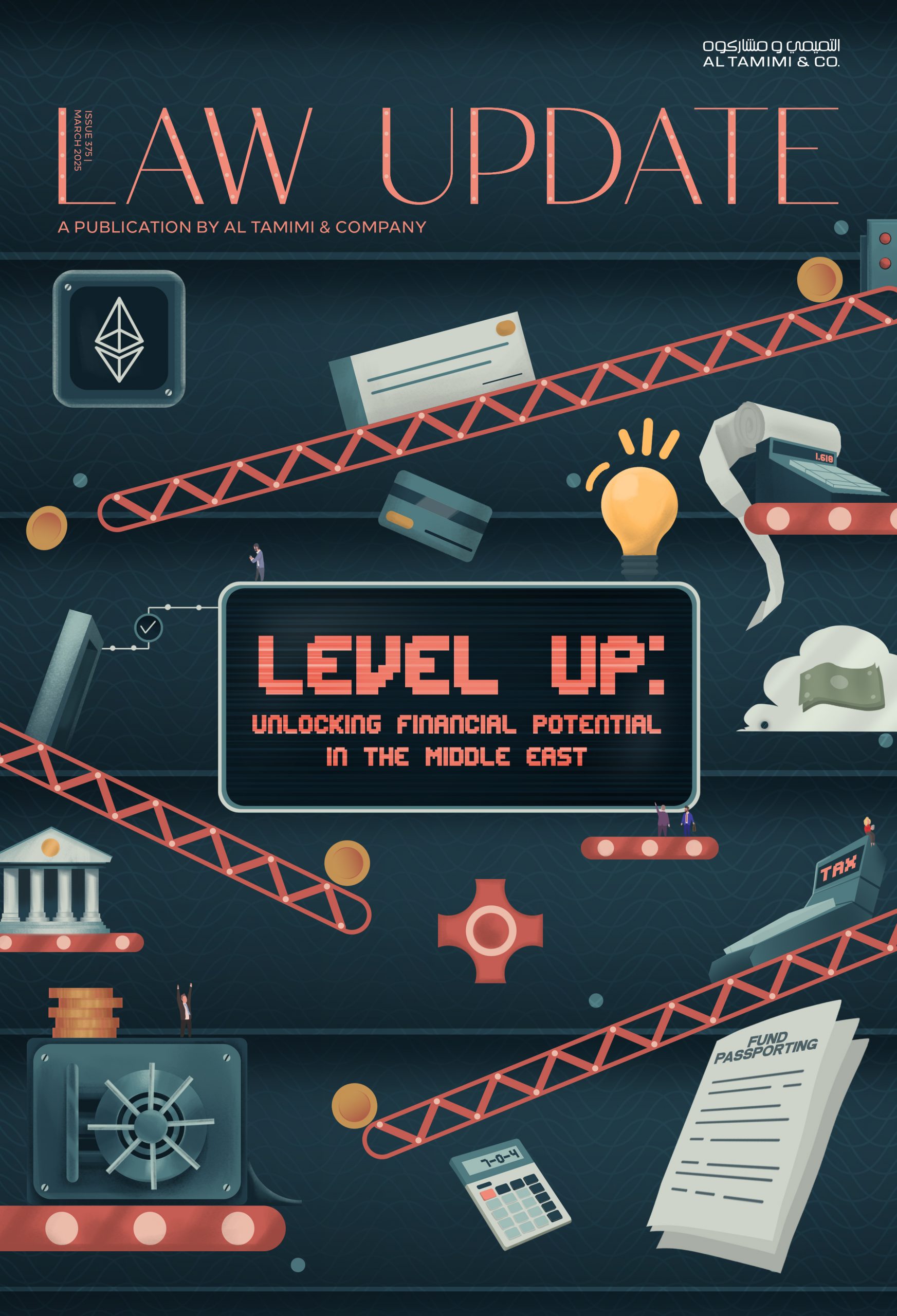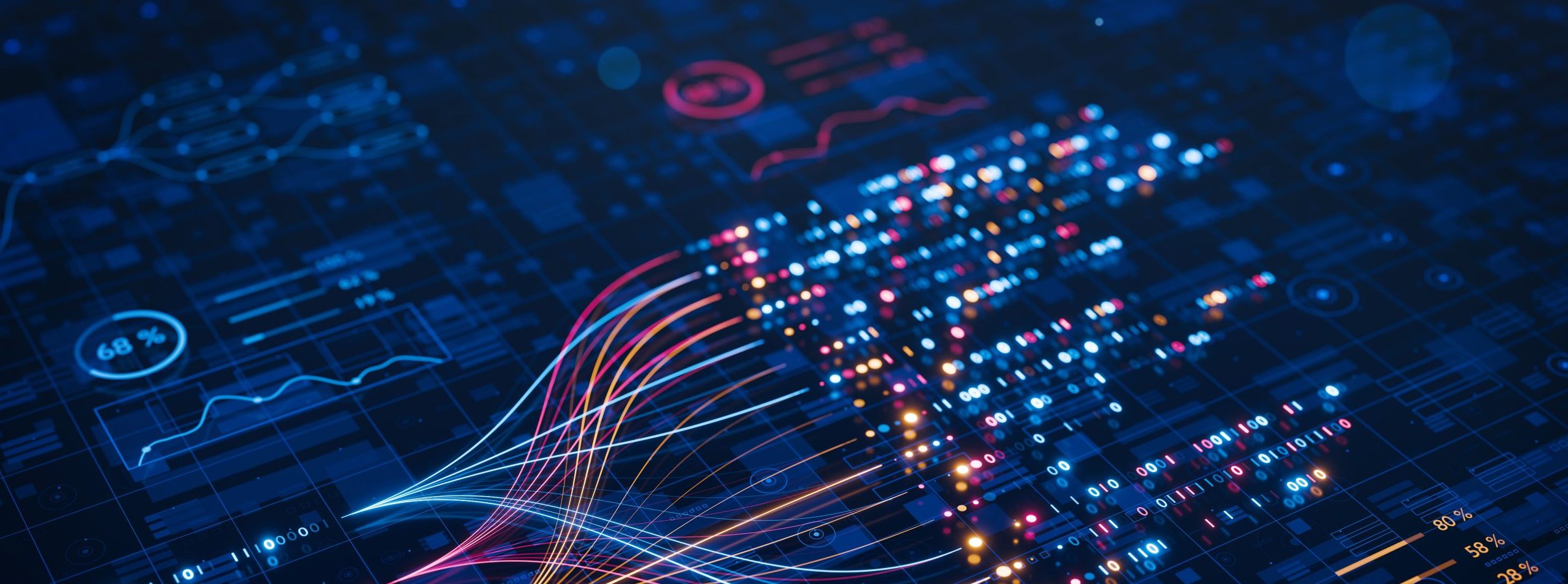- Arbitration
- Banking & Finance
- Capital Markets
- Commercial
- Competition
- Construction & Infrastructure
- Corporate / Mergers & Acquisitions
- Corporate Services
- Corporate Structuring
- Digital & Data
- Dispute Resolution
- Employment & Incentives
- Family Business & Private Wealth
- Innovation, Patents & Industrial Property (3IP)
- Insurance
Find a Lawyer
Book an appointment with us, or search the directory to find the right lawyer for you directly through the app.
Find out more
Level Up: Unlocking Financial Potential In The Middle East
Welcome to this edition of Law Update, where we focus on the ever-evolving landscape of financial services regulation across the region. As the financial markets in the region continue to grow and diversify, this issue provides timely insights into the key regulatory developments shaping banking, investment, insolvency, and emerging technologies.


2025 is set to be a game-changer for the MENA region, with legal and regulatory shifts from 2024 continuing to reshape its economic landscape. Saudi Arabia, the UAE, Egypt, Iraq, Qatar, and Bahrain are all implementing groundbreaking reforms in sustainable financing, investment laws, labor regulations, and dispute resolution. As the region positions itself for deeper global integration, businesses must adapt to a rapidly evolving legal environment.
Our Eyes on 2025 publication provides essential insights and practical guidance on the key legal updates shaping the year ahead—equipping you with the knowledge to stay ahead in this dynamic market.
The leading law firm in the Middle East & North Africa region.
A complete spectrum of legal services across jurisdictions in the Middle East & North Africa.
-
Practices
- All Practices
- Banking & Finance
- Capital Markets
- Commercial
- Competition
- Construction & Infrastructure
- Corporate / Mergers & Acquisitions
- Corporate Services
- Corporate Structuring
-
Sectors
-
Country Groups
-
Client Solutions
Today's news and tomorrow's trends from around the region.
17 offices across the Middle East & North Africa.
Our Services
 Back
Back
-
Practices
- All Practices
- Banking & Finance
- Capital Markets
- Commercial
- Competition
- Construction & Infrastructure
- Corporate / Mergers & Acquisitions
- Corporate Services
- Corporate Structuring
- Digital & Data
- Dispute Resolution
- Employment & Incentives
- Family Business & Private Wealth
- Innovation, Patents & Industrial Property (3IP)
- Insurance
- Intellectual Property
- Legislative Drafting
- Private Client Services
- Private Equity
- Private Notary
- Projects
- Real Estate
- Regulatory
- Tax
- Turnaround, Restructuring & Insolvency
- White Collar Crime & Investigations
-
Sectors
-
Country Groups
-
Client Solutions
Navigating the Future: ADGM’s DLT Foundation Framework and the Rise of South Korean IT and Gaming Giants

The Abu Dhabi Global Market (“ADGM”) has established itself as a leader in the realm of distributed ledger technology (“DLT”) by introducing a groundbreaking regulatory framework that has garnered the attention of tech giants worldwide. South Korean (“Korean”) IT and gaming companies, in particular, have recognised the immense potential of ADGM’s DLT Foundation framework to revolutionise their operations and expand their presence in the thriving Middle Eastern market.
ADGM’s DLT Foundation Framework: A Paradigm Shift
ADGM’s DLT Foundation framework, outlined in the Distributed Ledger Technology Foundations Regulations 2023, represents a significant departure from traditional regulatory approaches. This innovative framework offers a comprehensive legal
structure that embraces the decentralised nature of DLT while providing much-needed regulatory clarity.
Key features of the framework include legal recognition of decentralised entities, flexibility for DLT Foundations to issue utility tokens, and a streamlined registration process designed to take just one month, reducing bureaucratic hurdles that often hinder innovation in the DLT space.
Benefits of a DLT Foundation
DLT projects typically face two competing objectives: decentralisation and a desire to focus and direct efforts and resources to develop the project and realise its full potential. Decentralisation is a core principle of many DLT projects, which prizes the transfer of authority and control away from centralised entities or groups to a distributed network of project participants. The perceived advantages of decentralisation include more equitable ownership and value distribution among stakeholders, insulation from vested interests, reduced risk of censorship, and greater diversity.
Accordingly, the concept of a Decentralised Autonomous Organisation (DAO) has emerged as the ideal-type governance structure. In this regard, an ADGM Foundation, or a similar legal form such as a private company limited by guarantee, may prove attractive on account of their specific legal features which mitigate some of the perceived disadvantages of centralisation whilst also providing the utilitarian efficiency of a centralised body.
Foundations are particularly suited to DLT projects because they typically do not have owners in whose interests they are operated, but instead are required to operate in accordance with certain objects or purposes set out in their constitutions. However, the ADGM Foundation regime, like most foundation regimes, was designed prior to the advent of DLT, and hence with other purposes in mind – predominantly charitable or wealth management purposes. While a foundation is inherently well-suited to DLT projects, there are certain features and requirements within the current foundations regime that impose constraints that are not desirable for DLT projects.
Governance and Control Structure of a DLT Foundation
The governance and control structure of a DLT Foundation is designed to balance the interests of various stakeholders while ensuring compliance with the foundation’s constitutional documents. Key elements of this structure include:
Foundation Council: Token-holders and Founder(s) may be appointed to the Foundation Council as they have a vested interest in the running of the
- Council Members must exercise their duties with skill, care, and due diligence.
- Token holder Voting: The notion of token-holders is introduced in a DLT Foundation if the foundation is issuing tokens, allowing for a more decentralised decision-making process.
- Guardian: A Guardian, whose appointment is optional during the Founder’s lifetime and compulsory upon the Founder’s death, will supervise the actions of the Foundation Council and ensure compliance with constitutional documents. A DLT Foundation can add a requirement to its Charter that the Founder(s) will step down from the Foundation Council and an independent Guardian will be appointed within a certain timeframe or following completion of certain milestones, allowing the foundation to achieve full decentralis
- Distribution of Profit: The ADGM takes a flexible approach whereby the founders may state in the Charter whether they want to have income/assets distributed and the mechanism for any such distribution, as the distribution of assets/income to token-holders may lead to the token being characterised as a security across various jurisdictions.
Reporting and Disclosure Level of a DLT Foundation
Due to the increased demands for transparency in the crypto industry, information on DLT Foundations will be public. They would be required to prepare and file the DLT Foundation’s Charter, audited annual accounts, and information on the founders, council members, and guardian. DLT Foundations would also be required to file an annual return confirming the current nature of any tokens, beneficial owners, and any other information required by the Registrar. Additionally, there may be requirements for disclosures in the Charter concerning DAO tokenomics, vesting schedules, smart contracts, security audits, treasury, and whether the DLT Foundation operates on a single-chain or multi-chain structure.
The Middle East’s Thriving ICT Industry
The Middle East’s information and communications technology (ICT) industry is poised for remarkable growth, with projections indicating that it will reach $95 billion by 2025. This growth is driven by the region’s ambitious efforts to diversify its economy and embrace cutting-edge technologies. As Middle Eastern governments seek to develop robust IT infrastructures and foster innovation, they are increasingly looking to collaborate with global tech leaders, such as those from South Korea, who can bring expertise and experience to the table.
In this context, Korean tech companies have positioned themselves as valuable partners for Middle Eastern government authorities seeking to develop robust IT infrastructures sharing the same vision for digital transformation and the tech-enabled future.

Korean Tech Companies Making Waves
Several prominent Korean companies have already made significant inroads in the Middle East, looking to expand their reach and tap into new markets. Naver Corp. has secured a $100 million deal to establish digital twin platforms in key Saudi cities, while its metaverse arm, Naver Z Corp., has been collaborating with the UAE’s Sharjah Media City to develop cutting-edge metaverse technology and content.
The gaming sector has also witnessed a notable influx of Korean companies.
Neoply, a blockchain arm of Neowiz Holdings, a prominent Korean gaming venture, has established its global headquarter in Abu Dhabi, called H-Lab joined Abu Dhabi Investment Office (ADIO)’s Innovative Programme, which supports the growth of tech-focused industries in the UAE capital. Similarly, gaming giant Nexon Corp. has set up subsidiaries in the Middle East to expand its global blockchain business and plans to release a blockchain-enhanced version of its well-known MMORPG, MapleStory.
By collaborating with Middle Eastern partners and leveraging the support provided by ADGM’s framework, these tech giants can unlock the vast potential of DLT innovation and drive the digital transformation of the region, creating value for businesses and consumers alike.
To fully capitalise on the opportunities presented by the framework, Korean tech companies must navigate the legal and regulatory landscape with precision and collaborate closely with experienced legal advisors and Company Service Providers (CSPs) in ADGM.
Conclusion
ADGM’s pioneering DLT Foundation framework, established by the Distributed Ledger Technology Foundations Regulations 2023 and supported by the Guidance on Permitted Activities for DLT Foundations, represents a significant opportunity for collaboration and growth between the Middle East and Korea. As Korean tech giants establish a presence in ADGM and collaborate with Middle Eastern partners, they can unlock the vast potential of DLT innovation and drive the digital transformation of the region, showcasing the power of innovation and partnership in shaping the future of technology.
Key Contacts
Contributors

Stay updated
To learn more about our services and get the latest legal insights from across the Middle East and North Africa region, click on the link below.


